Text
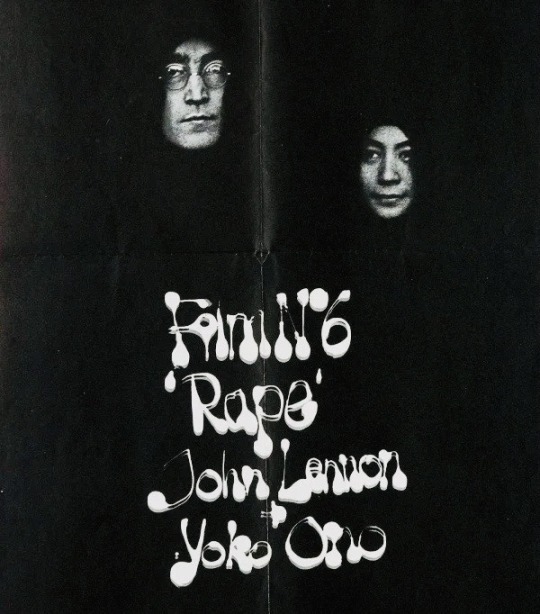
John Lennon + Yoko Ono Film №6 ‘Rape’ 1969
“The cameraman will chase a girl on a street with a camera persistently until he corners her in an alley, and, if possible, until she is in a falling position.”
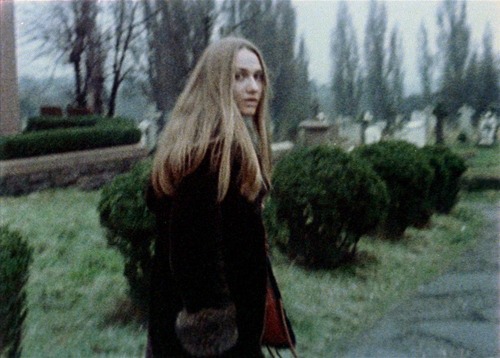

“This film was shot by our cameraman Nick, while we were in a hospital. Nick is a gentle-man who prefers eating clouds and floating pies to shooting “Rape”. Nevertheless it was shot.” Yoko, 1969
“On the third day we were given the key to her apartment. That’s pretty full on and ends with me being very aggressive with the camera, putting my foot on the phone so she can’t call the police. I felt we had pushed it as far as we could.” Nic Knowland

“The girl in the film did not know what was happening. Her sister was in on it, so when she calls her sister on the phone, her sister is just laughing at her and the girl doesn’t understand why. Nic Knowland did the actual shooting. I wasn’t there. Everything was candid, but I kept pushing him to bring back better material. The type of material he brought back at first was something like he would be standing on the street, and when a group of girls passed by, he would direct the camera to them. The girls would just giggle and run away, and he wouldn’t follow. I kept saying he could do better than that, but he actually had a personal problem doing the film because he was a Buddhist and a peacenik – he didn’t want to intrude on people’s privacy. I remember John saying later that no actress could have given a performance that real.” Yoko, 1987


“I’ve done tons of work, and I don’t have time to check it all out, but I wish I could check about this strange thing, which is that a lot of my works have been a projection of my future fate. It frightens me. It simply frightens me. I don’t want to see Rape now. I haven’t seen the Rape film in a long time, but just thinking about the concept of it frightens me because now I’m in that position, the position of the woman in the film.” Yoko, 1987
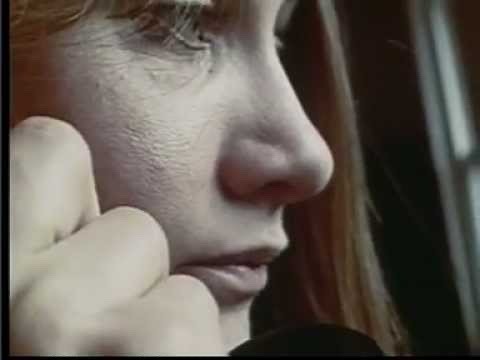
“A profound piece, especially in the context of the Me Too movement. It’s not designed to be entertaining, it’s a concept, a metaphor and an experience.” Sean Ono Lennon
#yoko ono#john lennon#john and yoko#rape film#film#women in film#film history#sean ono lennon#the beatles#1968#1969#cw: stalking
16 notes
·
View notes
Text

How did Film No. 5 (Smile) (1968) come about?
When I went to London, I still kept thinking about the idea of smile, so when I had the chance, I decided to do my version. Of course, until John and I got together, I could never have rented a high-speed camera. Well, maybe if I’d looked into it, I could have. I don’t know, but I thought it would be too expensive.
Did you know Lennon well at the point when you did Film No. 5 (Smile)?
Yes.
Because I wondered whether you made the film because you wanted to capture a certain complexity in him, or whether the complexity that’s revealed in that seemingly simple image is a result of what the high speed camera reveals, or creates, as it films.
Well, I certainly knew John was a complex person. But the film wasn’t so much about his complexity as a person. I was trying to capture the complexity of a visual experience. What you see in that film is very similar to how you perceive someone when you are on acid. We had done acid trips together, and that gave me the idea. I wondered, how do you capture this?
My idea was to do everybody's smile. But when I met John, I thought, doing everybody's smile is going to be impossible; and he can represent everybody's smile.
Yoko, 1987
#:)#smile film#smile#yoko ono#john lennon#john and yoko#the beatles#art#1968#women in film#film history
17 notes
·
View notes
Text

AJ Weberman, 1970s
Let’s talk about your relationship with John Lennon.
How that started was that we invaded Allen Klein’s office, he did the fucking Concert for Bangladesh album, and he kept all the money ... So, New York magazine does a whole story on it, and we figure, “Hey, if this guy has to rip off the starving people of Bangladesh, he must be one hungry motherfucker.” So, we had our free lunch for starving music executives program where we went to the dumpsters on 1st Avenue near the fruit stands, got all this rotten fruit, came into Klein’s office, and tossed it around. Fucking Phil Spector was there man, he attacked my old lady, Anne. So, then he had the bodyguards throw us out. So then, John and Yoko call me. And Yoko says, “Come on over for tea with you and Anne.” You know, so we went over to Bank Street. And then the friendship started.
What do you think they wanted? Did they want protection, because they were new to New York?
No, no. They were pissed off at Allen Klein, they liked what we did, you know. We spoke for them, too. They liked activism.
That guy John Lennon was a revolutionary. You know, “working-class hero.” He was into that fucking IRA. I met IRA guys over there who were selling hash and smurfing arms and sending it back to the IRA in Ireland. He was crazy, you know. He gave me money to start riots in Miami, at the Republican Convention.
So, Lennon believed in his politics, unlike Dylan?
You know, Lennon, he was using smack a lot of the time. You’d go there and they’d say, “Oh he’s depressed, you can’t go in the room.” They’d just load me up with records and Yoko’s art and everything, you know. And, in retrospect, you know, I would say he was going through cold turkey. He had no track marks, he was snorting at the time.
Back when Lennon convinced me he was up to revolutionary shit, we went and we put a phone line, we went to the back of the house, to John Cage’s phone line, and put an extension into Lennon’s house so when Cage went to sleep at night, Lennon could make his calls on Cage’s line without the FBI tapping them.
Did John Cage ever know that?
I don’t think so. I know Andy Warhol knew that we stole his furniture. What happened was, we’d just moved, we got back from Miami and we had the Yippie headquarters on 3rd Street and 2nd Avenue in a basement on the Angels block. So, we were looking for like a space heater or something. So, I was walking by Cooper Square and I saw this door was busted open. So, I walked upstairs and then holy shit, there was all this art deco stuff was there. You know bureaus and lamps and clocks made out of marble. I said, “Wow, somebody abandoned this.”
So, I had this guy come with a truck and loaded it all into a truck and brought it back to my loft and to the Yippie house. A week later, I read in New York magazine that somebody looted Andy Warhol’s art deco stash. So, later at a party, Dana Beal went over and told him, “Andy, we were the ones that took it, we thought it was abandoned property.” Andy says, “I don’t care, as long as you didn’t sell it, it’s OK with me.”
What did Lennon want from America?
What did he want? He loved New York, you know. He liked Jerry Rubin and Abbie Hoffman. You know, they’re entertaining people. And David Peel, of course. He was a revolutionary, so he just fit right into the crew basically. He came to demonstrations.
I had one, you know, “Paul Is Dead,” we were demonstrating outside Linda Eastman’s parents’ house. You know we had a hearse and we had a big mock funeral for Paul McCartney because his album was so apolitical. So, he and Yoko, they showed up in bags and read a whole statement.
When did you stop seeing him?
After he moved to the Dakota. Then they got real heavy into heroin. Really heavy, you know. They became addicts.
Did you ever see John Lennon use heroin?
No, he knew I was opposed to it. Because I was saying that Dylan was an addict, and he had sold out his left-wing thinking to use heroin—when of course there was no left-wing thinking. He just became the Marxist minstrel, because that’s what was happening at the time.
AJ Weberman to tabletmag.com, October 2015
full interview here (warning- ethnic, religious slurs)
#AJ Weberman#john lennon#yoko ono#john and yoko#Allen Klein#phil spector#Lee Eastman#linda mccartney#paul mccartney#paul is dead#andy warhol#john cage#cw: heroin
144 notes
·
View notes
Text


44 notes
·
View notes
Text

John Lennon and George Harrison autographed manuscript editing notes for the music video of 'Hello, Goodbye'
Headed "Hello Goodbye" with a pair of eyes, musical notes, and other doodles in Lennon's hand, the note comprising a numbered sequence of descriptive summaries of shots for both versions of the video (first in "civvies", second as "Sgt Pepper"), the first seven shots in Lennon's hand in black ink, followed by nine shots in Harrison's hand in black ball-point, with one final shot in the hand of Mal Evans in black ball-point, altogether 23 lines, one page, ruled paper, 264 x 203mm, [November 1967], trimmed at foot with loss, minor nicks and staining.
This is an exceptionally rare manuscript that encapsulates the close working relationship between the Beatles: it shows Lennon and Harrison in close collaboration working on a project that was primarily associated with McCartney. The Beatles were always keenly aware that success in the pop world was about the look as well as the sound, and this manuscript reveals how this attention to the visual extended to the new genre of the music video.
77 notes
·
View notes
Text

Magical Mystery Tour original production still, 1967
Still of John Lennon taken whilst on the bus during location when filming Magical Mystery Tour.
23 notes
·
View notes
Text
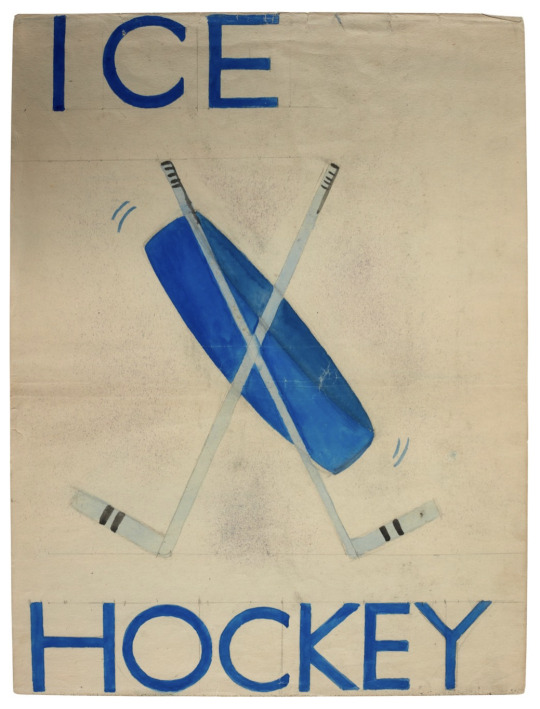

Paul McCartney - An Early Sketch of Ice Hockey Players
EARLY ARTWORK BY THE YOUNG PAUL MCCARTNEY. These sketches were originally in a school sketchbook in wrappers labelled in ink "MCCARTNEY | RB". The volume dated from McCartney's schooldays at the Liverpool Institute High School For Boys and had the name of his form on the upper cover, which dates it to 1957. McCartney has a lifelong passion for visual art: he conceptualised the Sgt Pepper cover, has continued to paint throughout his life, and his involvement in the art world stretches back to his support of the Indica Gallery in the mid-1960s.
34 notes
·
View notes
Text

Tug Of War album cover concept, created by Peter Christopherson of Hipgnosis
Aubrey Powell: Paul wanted ideas for Tug Of War and Peter and Storm insisted we show him this idea. So Storm and I went to Paul’s house in St Johns Wood and were sitting in his kitchen and pulled out these ideas. He looked at this one, said “This is a very interesting idea, beautifully done, but it’s just not for me.” But I loved that he appreciated the art of it.
32 notes
·
View notes
Text

#the beatles#maharishi mahesh yogi#Donovan#marianne faithfull#the rolling stones#the beach boys#transcendental meditation
28 notes
·
View notes
Text
It is real as far as I can tell. Denny Laine went on record about the event to Geoffrey Giuliano-
“It occurred in October of 1980 in the tiny village of Tenterden, in Kent. Wings had been rehearsing in a manor house rented from prominent London publisher Martin Miller when they heard the terrible sounds of a car crash outside the main gates.
Laine recalls: "Apparently, this young Japanese au pair girl who worked for the Millers was taking their infant daughter, Cara, for a walk in her pram when this supposedly drunken driver tried to overtake another car and knocked them both down. The baby flew up into the air and landed unhurt by a hedgerow, but the poor au pair was very badly injured."
“I was actually the first to reach her, but Paul dove right in and started nursing her, trying to do what he could.”
“Paul was just saying things like, 'It'll be alright, luv, don't worry,' but we were getting no response. At one point he glanced over at me and slowly shook his head. He knew. We both knew. Still, he just sat there stroking her long black hair, talking and sometimes even singing softly as she lay there dying."
Apparently out of respect for the victim of the crash and family Paul had his team enforce a tight media ban on his involvement.
Much more detail here! (Warning for graphic descriptions of injury and death, as well as mentions of John’s death) I generally take Giuliano with a grain of salt but it appears to be corroborated in several places, this clipping and a blog post from an acquaintance of the child’s family.
@talking-perfectly-loud according to the link above it happened in October of 1980, so Paul would have been 38. Must be a typo.

The ex-Beatle rushed to help pull an unconscious 14-month-old girl from the mangled wreck of her pram, which had been slammed by a speeding car.
He then comforted the girls dying Japanese nanny for half an hour until the ambulance arrived.
A spokesman for the shocked McCartney said, ‘He doesn’t want to talk about the tragedy.’
481 notes
·
View notes
Text

The ex-Beatle rushed to help pull an unconscious 14-month-old girl from the mangled wreck of her pram, which had been slammed by a speeding car.
He then comforted the girls dying Japanese nanny for half an hour until the ambulance arrived.
A spokesman for the shocked McCartney said, ‘He doesn’t want to talk about the tragedy.’
481 notes
·
View notes
Text

Marijke Koger photographed by Linda McCartney, 1968
199 notes
·
View notes
Text

From L to R: Jann Haworth, Mohammed (Robert Fraser’s driver), Peter Blake, Andy Boulton (junior assistant), Trevor Sutton (assistant), Nigel Hartnup (leaning on the drum), Mme Tussauds worker, Michael Cooper, Mal Evans
#the beatles#sgt peppers lonely hearts club band#sgt pepper#behind the scenes#jann haworth#robert fraser#peter blake#mal evans#mme tussauds#1967
61 notes
·
View notes
Text

John and Yoko telegram to Ringo, 2 May 1969
39 notes
·
View notes
Text

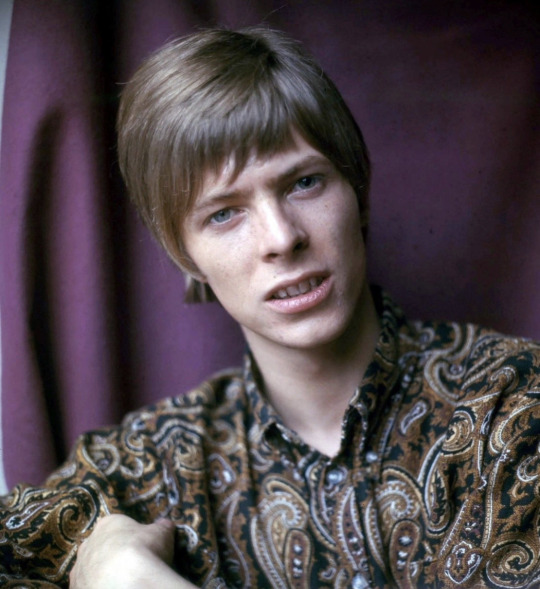
PAUL MCCARTNEY (MUSICIAN): I have fond memories of David in the ’60s where I used to live in London, and still live actually. And I was bachelor free then. And it was a bit like a salon in my house; anyone could drop in. Just to hang out. Anyway there was this young boy lying about, hanging around outside, and I said, “Come on in then.” I invited everyone in. And it was a guy in a floppy cap, with curly hair. And I said who are you, and he said David Jones, Davy Jones. And he had a demo for me. He played me the demo, and I thought, That’s really good. I must admit I thought his voice was a little like Anthony Newley, with the same kind of similarities, you know. But I thought he was great—a very personable, cool guy. I wished him well.
David Bowie: A Life by Dylan Jones
107 notes
·
View notes
Text
‘Dangerous’ is the word I think of when I think of Robert. Not because of his consumptions ... but because he was agreeably unpredictable. He made you feel alive. If anything was likely to happen in London that night you were in the right place for it if you were hanging out with Robert. Because if it didn’t happen he would go somewhere elsewhere it was happening, or he would make it happen.
Brian Clarke
32 notes
·
View notes
Text
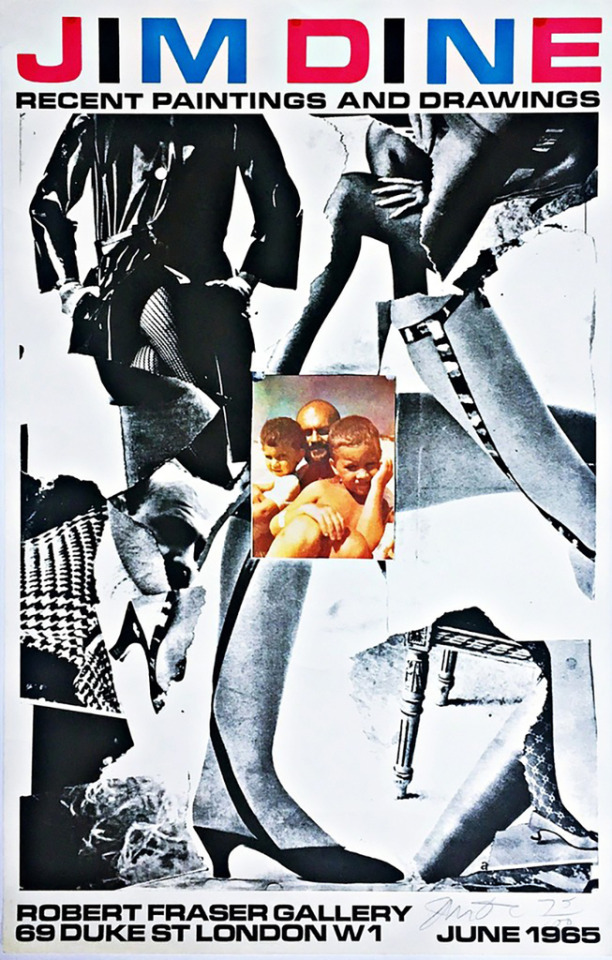
This Jim Dine lithograph was published on the occasion of his historic London exhibition at the Robert Fraser Gallery in June 1965. In late 1966, after showing Dine’s works, the Fraser Gallery was served a summons under an antiquated vagrancy law that prohibited the public display of “obscene” material. As a statement issued by the gallery at that time indicated, 21 of Dine’s drawings, “some of them showing various parts of the human body, were seized by the police,” along with copies of the exhibition’s catalog. A court later ruled the exhibition, but not the confiscated artworks, to have been indecent and charged Fraser a fine. A 2015 article in Hypoallergic recounts how Robert Fraser, referring to the British government’s heavy-handedness, sent a telegram to Dine in the U.S. It stated, “REGINA VERSUS VAGINA. LOVE, ROBERT.”
20 notes
·
View notes